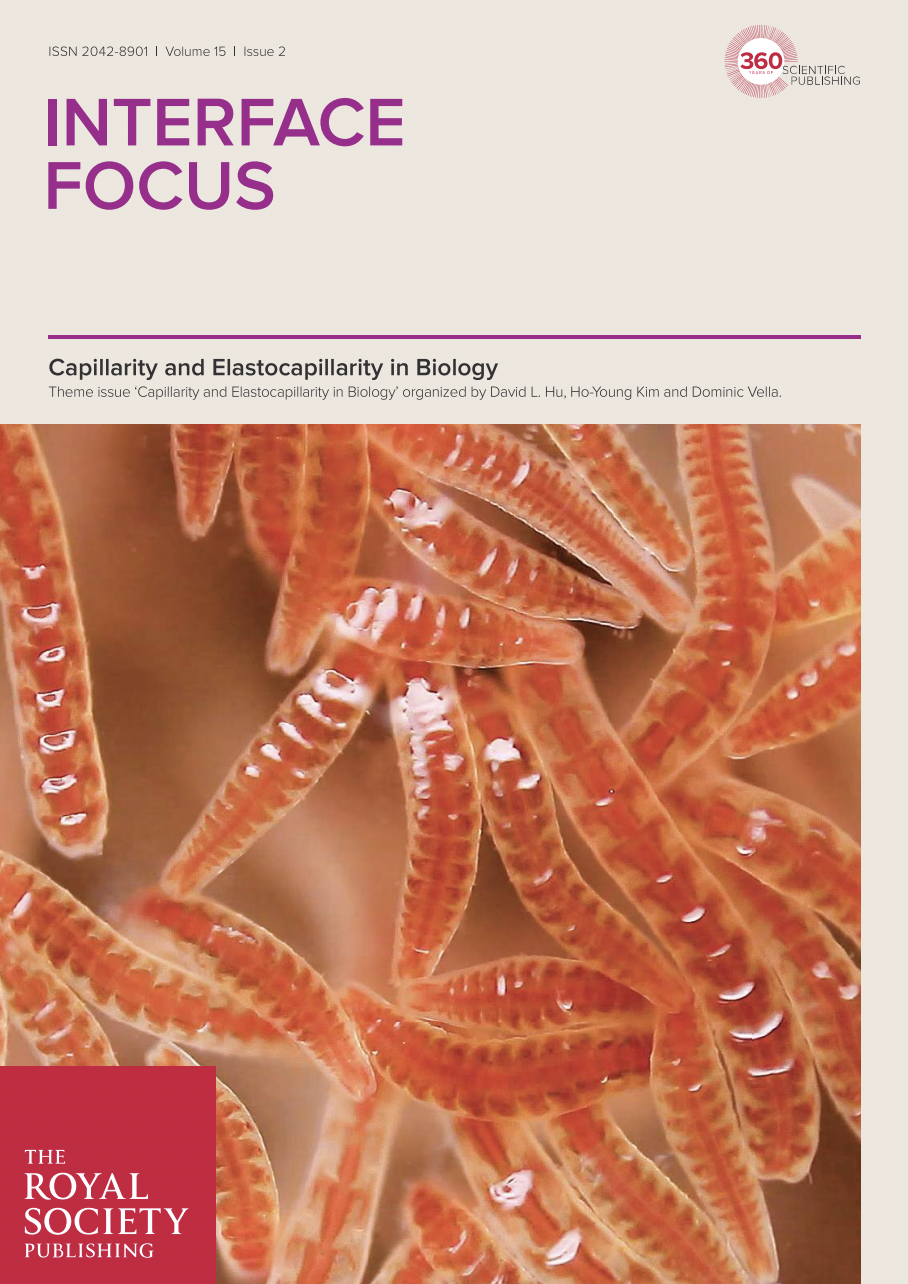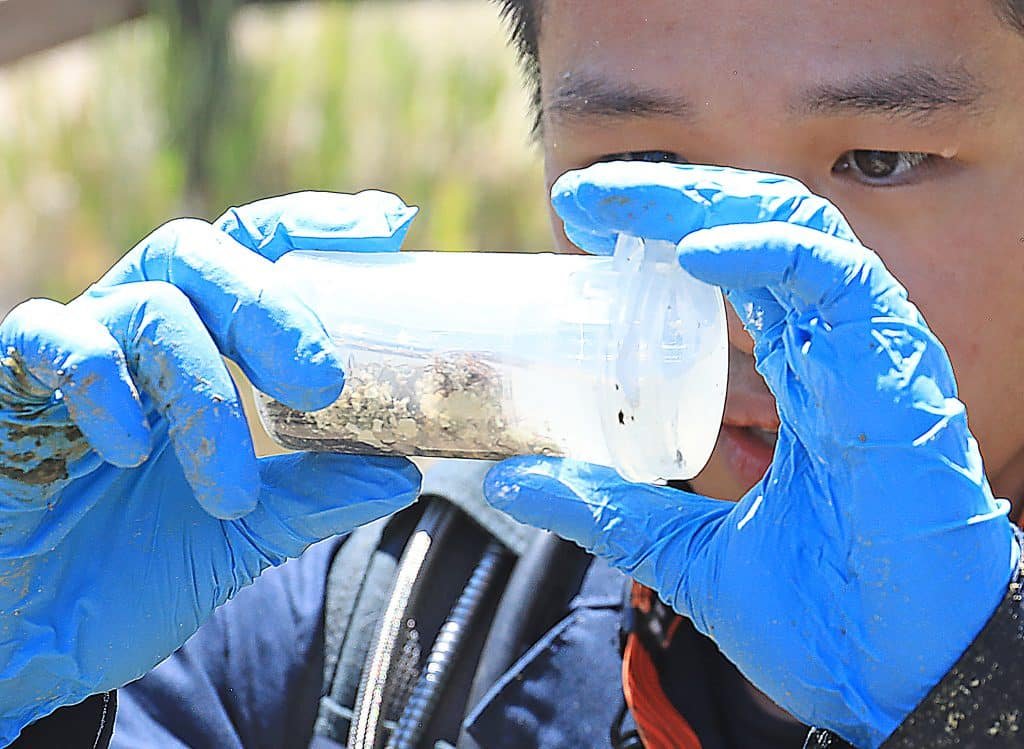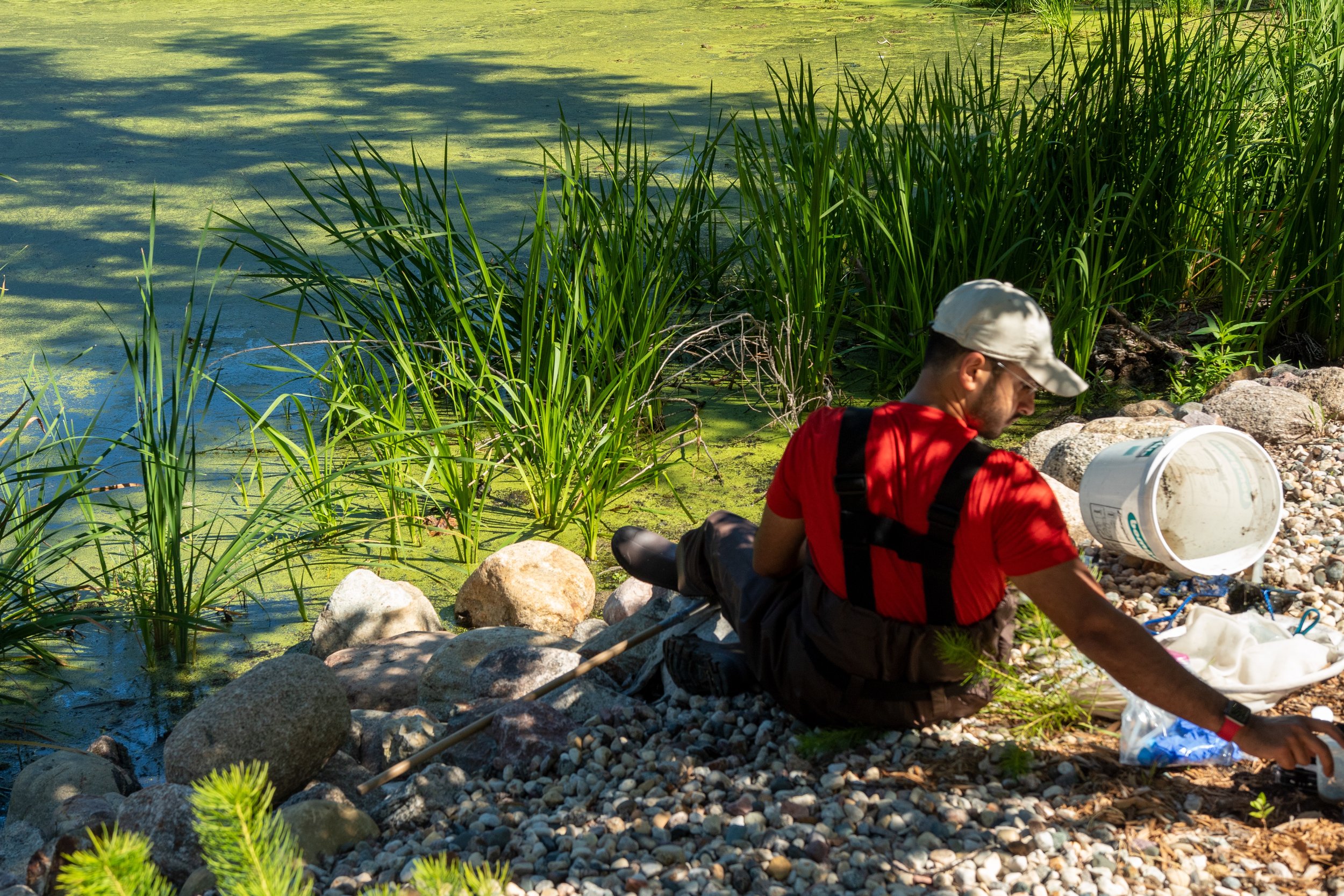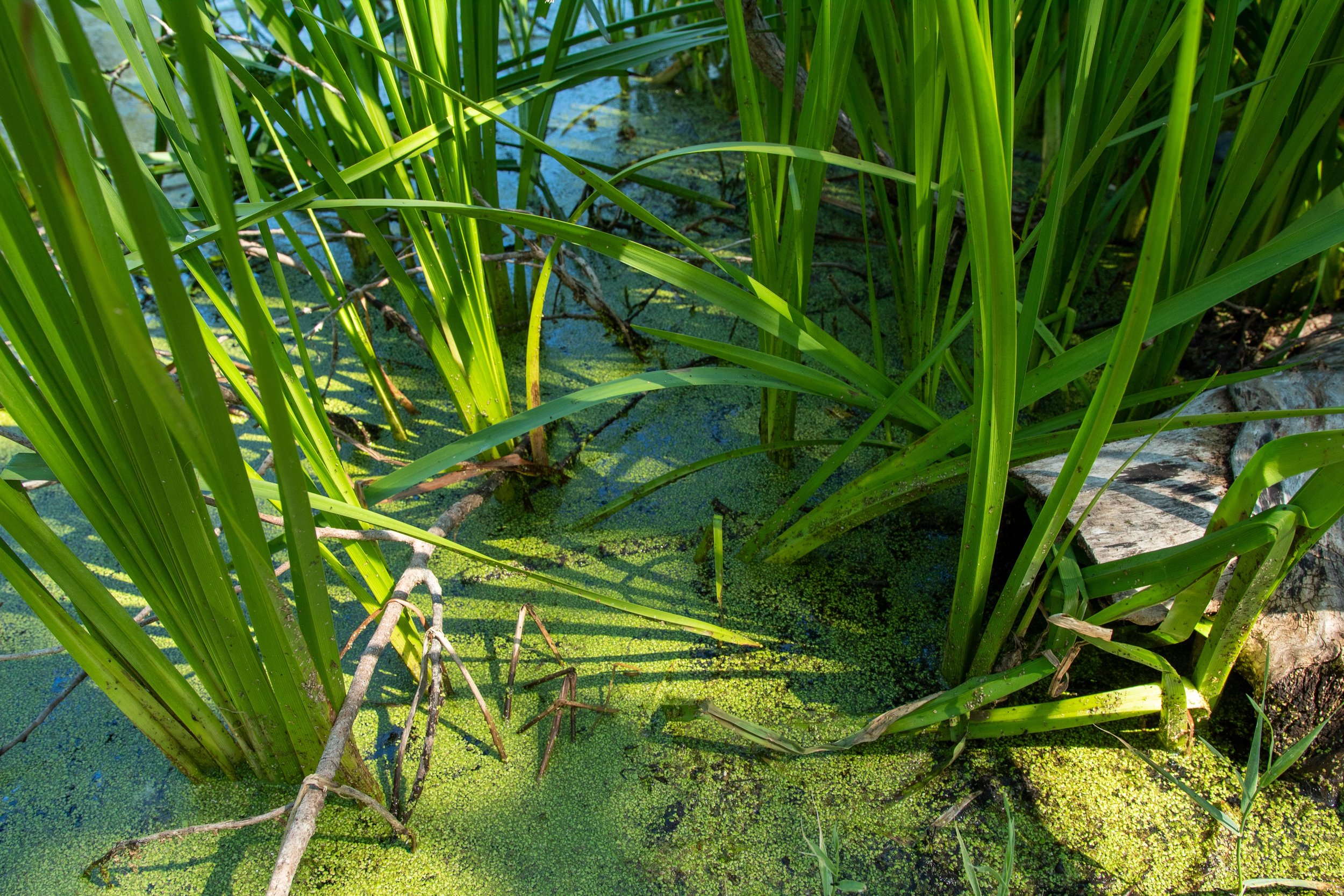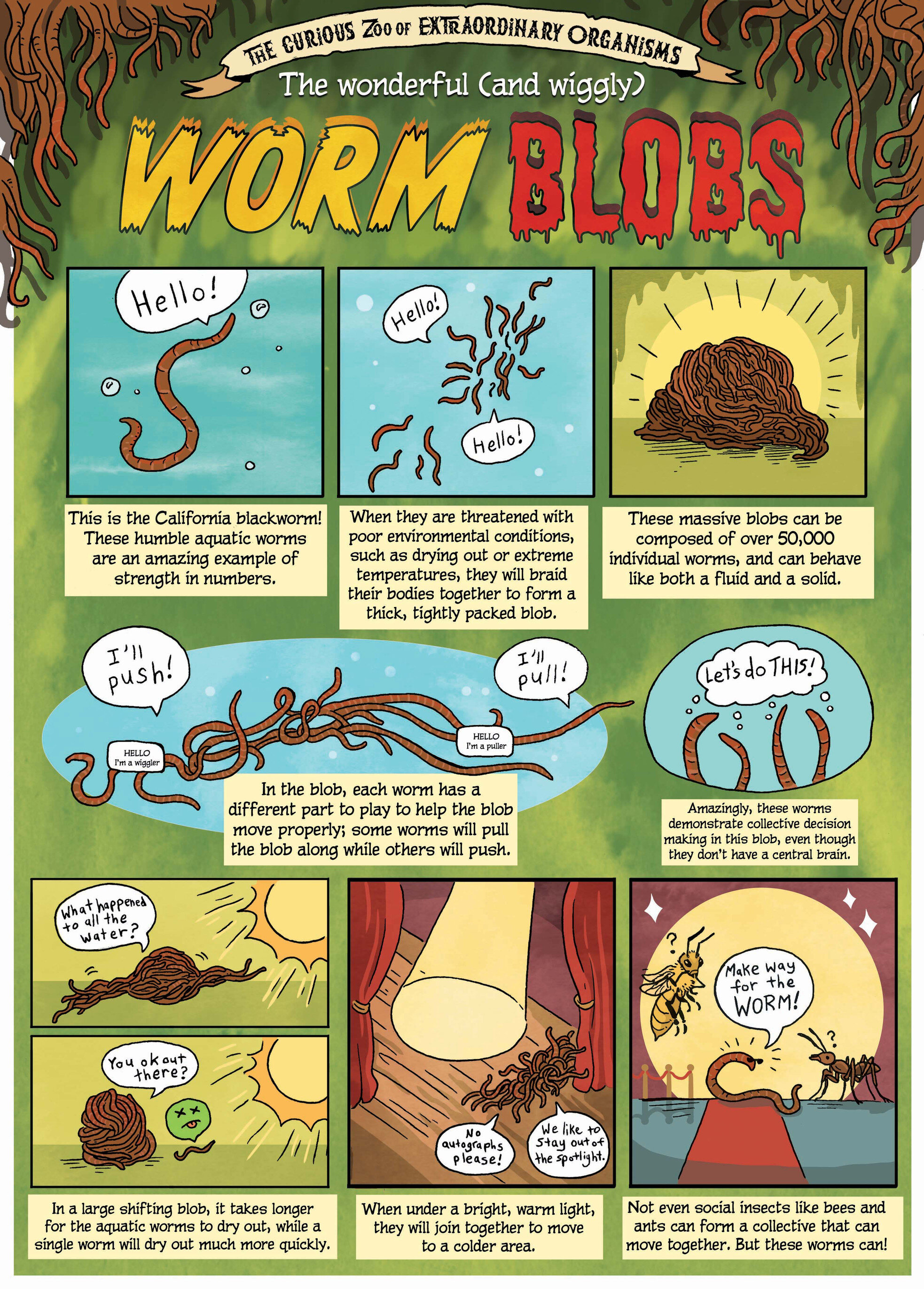Worm blobs
The stuff of science fiction
Check out the Bhamla Lab’s work, featured on Mashable!
Imagine a shape-shifting blob composed of tiny soft particles that can come together to form different shapes, squeeze under the door, or lift unexploded munition from the ocean floor.
As scientists, we dream of such task-capable and functional robotic blobs, but we currently don’t know the underlying principles of building these remarkable structures or even the rules to program emergent behavior in these.
To bring this dream to reality, we are studying the extraordinary (and unparalleled) behavior in aquatic worms that form 3d, squishy, and shape-shifting blobs, composed of tens of thousands of worms. We use biological experiments, mathematical simulations and robophysical models to uncover the secrets of these fascinating living organisms.
A blackworm blob under a microscope. It only takes around 10 worms to form a coherent blob. There is no known limit to how many worms can form a blob. Credit. Harry Tuazon, Bhamla Lab at Georgia Tech
This project has been featured in the New York Times, mashable, and more.
Check out the full New York Times article here.
Major questions
1) Why do worms blob?
2) How does the blob compute, decide, and synchronize for emergent behavior?
3) How do we build active matter robotic blobs?
What we’ve discovered
Worm blobs exhibit complex emergent behavior for collective survival
Worms form hemispherical shapes to reduce evaporation or collectively crawl to colder temperatures for safety. These blobs form a class of adaptive mechanofunctional living materials.
Worm blobs undergo a collective behavior change as a function of dissolved oxygen concentration.
The relative tail reaching activity flux of worms in low DO (<2 mg/L) is ~75x higher than worms in high DO (>8 mg/L). Additionally, we see that worm blobs in high DO form a much more tightly entangled, spherical collective while worms in low DO form a relaxed blob.
Worm blobs can break-symmetry through entanglements and functional differentiation
Using active polymer models with biological experiments we are uncovering how worms (and simulated polyworms) exhibit emergent locomotion behavior through active knots and tangles.
Robophysical blobs pave the way for emergent robotics
Robotic blobs reveal the rich phase behavior that emerges due to stochastic local interactions that lead to emergent functionalities. These principles can be harnessed in the design of emergent swarm robots for real-world applications.
Worm blobs and simulated “smarticles” exhibit tunable elastic properties as a function of entanglement.
Numerically simulated “smarticles” and worm blobs demonstrate that the elastic properties of a collective structure can be tuned by controlling the entanglement of the individual units. These can inspire new classes of synthetic emergent super-materials.
Insights into material collecting behavior in worm blobs
The gathering habits of blackworms reveal that material clumping efficiency is influenced by population size and is driven by mucus secretions, offering insights into potential collective behavior and bioinspired systems.
Unlocking Secrets of Topologically Tangled Active Matter
We explore the rich potential of worm blobs, showcasing emergent behaviors and inspiring future directions in soft robotic physics and active polymer research.
Quantifying Blob Properties
We have uncovered various properties of these blobs: they behave as a liquid and can bounce as a solid, can form and reform (like traditional polymeric solutions), and the blob can collectively respond to light, temperature, or oxygen and generate locomotion.
Worms leverage surface tension rather than buoyancy for flotation
Blackworms achieve flotation by latching a small portion of their tail to the water surface, utilizing surface tension to support up to eight times their body weight. Contrary to expectations, surface corrugations along the body do not increase flotation capacity, indicating their role may be more related to regulating contact or rapid detachment rather than enhancing weight support.
Read the papers
Flotation of aquatic worms and other hyponeuston. Interface (2025)
Leeches Predate on Fast-Escaping and Entangling Blackworms by Spiral Entombment. ICB (2024).
Worm Blobs as Entangled Living Polymers: From Topological Active Matter to Flexible Soft Robot Collectives. Soft Matter (2023).
Collecting-Gathering Biophysics of the Blackworm L. variegatus. Integrative and Comparative Biology (2023).
Amorphous Entangled Active Matter. Soft Matter (2023).
Oxygenation-Controlled Collective Dynamics in Aquatic Worm Blobs. Integrative and Comparative Biology (2022).
Collective dynamics in entangled worm and robot blobs. Proceedings of the National Academy of Sciences (2021).
Emergent Collective Locomotion in an Active Polymer Model of Entangled Worm Blobs. Frontiers in Physics (2021).
What others are saying
“This discovery shows that observations of animal behavior in natural settings, along with biological experiments and modeling, can offer new insights, and how new knowledge gained from interdisciplinary research can help humans, for example, in the robotic control applications arising from this work.”
spelunking in search of worm blobs
Our team has conducted field work in a toxic sulfur cave in Steamboat Springs, Colorado, in search of Limnodrilus sulphurensis, an aquatic worm showing similar blobbing behavior to California blackworms.










